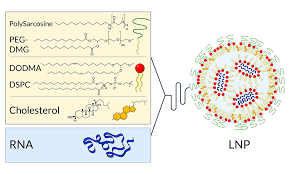A new study sponsored by Sartorius, a global leader in biopharmaceutical innovation, has demonstrated promising advancements in optimizing mRNA transfection in human T-cells using high-throughput cytometry and live-cell imaging. By utilizing jetMESSENGER®, a non-viral mRNA transfection reagent, and leveraging state-of-the-art platforms like the Incucyte® Live-Cell Analysis System and iQue® High-Throughput Screening cytometer, Sartorius researchers have identified enhanced workflows that preserve T-cell viability, improve transfection efficiency, and amplify cytotoxic activity against cancer cells.
The findings not only support the growing role of mRNA-based approaches in precision medicine but also emphasize how safer, non-viral alternatives can be scaled up for clinical-grade cell engineering, especially in cancer immunotherapy.
The Promise of mRNA in T-Cell-Based Therapeutics
T-lymphocytes (T-cells) are a critical arm of the adaptive immune system, responsible for killing infected or malignant cells and orchestrating immune responses. Recent breakthroughs in CAR-T therapy, with FDA-approved treatments like Kymriah and Yescarta, have showcased the transformative power of T-cell manipulation in treating B-cell malignancies (U.S. FDA, 2025).
However, traditional methods like viral vectors pose limitations — including high costs, cargo size restrictions, immunogenicity, and insertional mutagenesis (Waldman et al., 2020). Electroporation, another widely used method, often damages cells and results in inconsistent transfection.
READ MORE: Tailored Biopsies Significantly Improve Patient Outcomes, ROME Trial Finds
In contrast, mRNA transfection offers several advantages: it’s non-integrative, reducing genomic risks, and enables rapid protein expression, making it ideal for temporary modifications in T-cells. It is especially useful for encoding chimeric antigen receptors (CARs), cytokines, or checkpoint inhibitors to enhance anti-cancer activity (Qin et al., 2022).
Sartorius’ latest research focuses on optimizing this method using jetMESSENGER®, a reagent specifically designed to deliver mRNA into difficult-to-transfect cells like primary human T-cells.
Streamlined Workflow for T-Cell Engineering
The study outlines a detailed transfection workflow, starting from T-cell isolation and activation to mRNA delivery and functional cytotoxicity assays. Primary human CD3+ T-cells were cultured in 4Cell® Nutri-T GMP media, with either interleukin-2 (IL-2) or interleukin-21 (IL-21) to support growth and activation.
After activation using T Cell TransAct™, cells were transfected with CleanCap® eGFP mRNA complexed with jetMESSENGER®. Live-cell imaging using the Incucyte® system allowed real-time tracking of cell proliferation and transfection, while high-throughput screening on the iQue® platform enabled precise quantification of viability, phenotyping, and T-cell activation.
Proliferation and Cytokine Influence: IL-2 vs. IL-21
A key part of the investigation was to assess the impact of cytokine choice on T-cell proliferation and function. Both IL-2 and IL-21 are well-known for their roles in T-cell biology. IL-2 supports proliferation and survival, while IL-21 is known to enhance effector function.
Results demonstrated comparable proliferation kinetics between IL-2 and IL-21, with overlapping growth curves. Viability remained high in both groups — 86.3% ± 1.8% for IL-2 and 87.9% ± 0.7% for IL-21 — affirming that either cytokine can sustain healthy T-cell expansion post-transfection.
Flow cytometry further confirmed similar immunophenotypes, including balanced proportions of CD4+ and CD8+ T-cells and consistent expression of the activation marker CD25. This parity indicates flexibility in choosing cytokine support based on downstream applications (Sun et al., 2023).
Efficient mRNA Transfection with Minimal Toxicity
Transfection was performed using rising doses of eGFP mRNA, achieving strong protein expression with minimal cytotoxicity. Sartorius’ jetMESSENGER® reagent enabled efficient mRNA uptake without the membrane disruption typical of electroporation.
Live-cell imaging captured the real-time expression of eGFP, while the iQue® Forecyt® software analyzed markers of cell viability, membrane integrity, and functional activation. These tools ensured that only healthy, functional T-cells were characterized further.
Cytotoxic Activity Against Tumor Cells
To validate the functional relevance of mRNA-transfected T-cells, an immune cell killing assay was performed using Cytolight Red A549 lung adenocarcinoma cells as targets. Transfected T-cells were added at varying effector-to-target ratios (5:1, 10:1, 20:1), and their ability to kill cancer cells was monitored using the Incucyte® SX5 platform.
The results revealed robust cytolytic activity, as measured by a decrease in red fluorescence from A549 cells. Importantly, T-cells transfected with eGFP-mRNA retained their killing efficiency, demonstrating that mRNA delivery did not impair cellular function — a critical requirement for therapeutic translation.
Tools and Reagents Driving Innovation
Sartorius’ success hinged on combining high-performance reagents with real-time analytic technologies:
- jetMESSENGER®: Ensures safe, efficient mRNA transfection in hard-to-engineer cells like T-cells.
- Incucyte® Live-Cell Analysis System: Enables kinetic visualization of proliferation, transfection, and cytotoxicity.
- iQue® HTS Cytometer: Offers high-speed multiparametric flow cytometry, streamlining phenotypic and functional analysis.
- 4Cell® Nutri-T GMP Media: Supports T-cell viability in serum-free or GMP-grade environments.
The system’s modular design — from cytokine addition to kinetic cytotoxic readouts — provides a comprehensive pipeline for preclinical T-cell research and scalable therapeutic development.
Clinical Implications and Future Outlook
These findings carry important implications for cancer immunotherapy, where engineered T-cells must be both potent and safe. Non-viral mRNA-based approaches, such as the one optimized here, offer a compelling alternative to traditional viral vectors, minimizing regulatory hurdles while supporting rapid prototyping and personalization.
As T-cell therapies expand into solid tumors, infectious diseases, and autoimmune conditions, streamlined workflows like this will be vital to accelerating development timelines and lowering manufacturing costs.
Moreover, combining high-throughput screening with live-cell imaging ensures that candidate therapies are functionally validated before clinical translation — improving outcomes and safety profiles.
About Sartorius
Sartorius is a global leader in laboratory and bioprocessing solutions, offering advanced technologies to support pharmaceutical development. Their innovations in single-use bioreactors, live-cell imaging, automated screening, and cell culture media help accelerate the discovery and manufacturing of life-saving therapeutics.
Their mission is to make complex, quality-critical processes easier and more reliable — enabling researchers and clinicians to transform care around the world.
